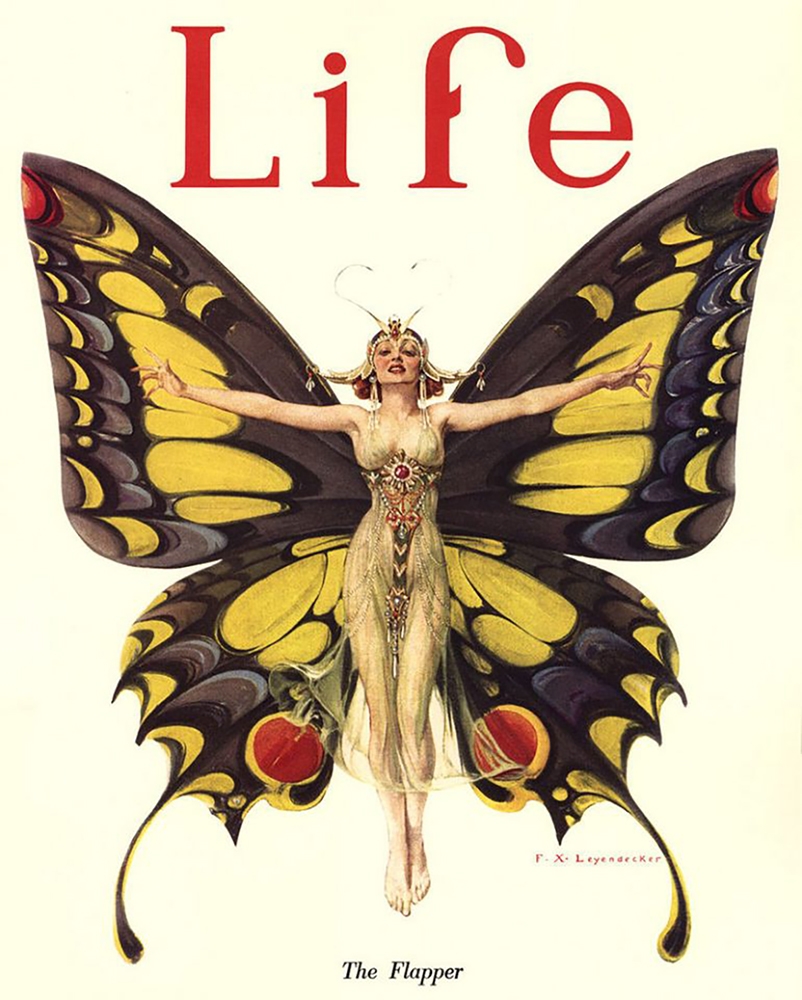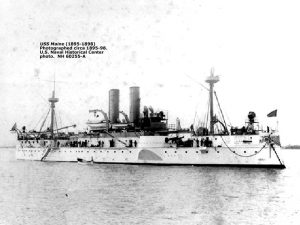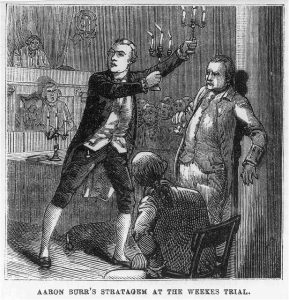Winner of the Fall 2016 StMU History Media Award for
Best Article in the Category of “Culture”
When one thinks of the 1920’s era one immediately thinks about Flappers. A flapper was considered a young woman who was very fashionable. This was a young female who enjoyed life to the fullest, flouting her unconventional standards of behavior and carefree party lifestyle.1 The spirit behind this movement was all about leaving the traditional ways of life behind and transforming into an independent woman.

Before World War I, the concept of femininity was referred to as the Gibson Girl. This term was used to describe these new independent and often well educated women. Gibson girls wore their hair long, pinned up and adorned with beautiful hats. They completed their ensemble by wearing long skirts and blouses that buttoned up to their necks. Despite their feminine appearance, these women were more than capable of doing the same things that men did. Examples of this include activities such as playing sports: skating, golfing, bicycling, tennis. These young ladies did not go out until they were asked properly by a young man who had good intentions and a promise of marrying them. Gibson Girls soon broke away from their traditional ways.2
In 1915, two years before America’s entry into World War I, a famous author by the name of H.L. Mencken introduced the word “Flapper” to the United States. Mencken stated that a flapper was “a woman who consumed music, literature and periodicals voraciously taking her cues for behavior and style from the media in front of her rather than the moral codes of decorum.”3 Another famous author, F. Scott Fitzgerald, famous for his classic novel The Great Gatsby, described the flapper as “lovely, expensive, and about nineteen.” John Held Jr., who was an American cartoonist, emphasized the flapper by drawing young girls wearing unbuckled galoshes that would make a “flapping” noise when walking.4 Despite the many different terms, Flappers were described essentially the same way: they were young girls who enjoyed the party life and had a sense of fashion.
After World War I ended in 1918, many things had changed for the men returning home, particularly the roles and values that women were embracing. The traditional values were gone and in their place came a faster, sleeker, and more daring approach to life. This time period not only ushered in an era of change in values, but it also established a new baseline for what was considered feminine. The Flapper Age was born and it brought with it a new and independent woman. These women smoked, drank, voted, cut their hair into bobs, wore eyeliner, and went to as many parties as they could—enjoying every bit of the social life along the way.5

During the 1920’s, fashion changed drastically due to a very famous designer, Coco Chanel. This woman helped flapper fashion to stand on its own. Typical flapper clothing included a simple sack like dress, which allowed women of all classes to make their own dresses and remain on trend.6 The waist of the dress was dropped to the hipline, and the skirt fell just below the knee. Stockings made of rayon were added and worn over a garter belt. To complete the look, bracelets were added and necklaces ran from the neck to the waist. Cloche hats sat atop their heads and drew the eye into a new hairstyle trend known as the bob.7 The make-up of flappers consisted of a red powder or cream that was used for the lips and cheek, eye-liner, powder for the face, and red lipstick that became very popular.
On January 19, 1919, the Eighteenth Amendment, also known as the Volstead Act, came into effect and gave way to the Prohibition Era in which the sale, production, importation, and transportation of alcohol was banned across the nation.8 This change in the legal system caused the sale and consumption of liquor and alcohol to go underground. The most rebellious thing a flapper could do at this time was to consume alcohol, and these young girls had a reputation for being giddy. The following year, on August 18, 1920, the Nineteenth Amendment was passed and women now had the right to vote.9 In 1924, the first radio launched more than 600 commercial channels around the U.S. The radio at the time was the social media on the flapper life. Many young girls swarmed the theaters to see the image of the flapper on screen. Famous actress Clara Bow, starred in the “Flapper” and made the look iconic.
On December 2, 1927, Henry Ford invented the Model A vehicle and car sales increased.10 Women were now owners of vehicles, and the car became a lifeline to a world full of excitement for the flapper in particular. With no one to stop them, they were free to come and go as they pleased. Liberated women were now able to go out and enjoy dancing during this era that was the Jazz Age. The most popular thing for a flapper to do was to go to a nightclub where she would drink, dance, and show off her moves. The era of the Flapper, however, came to an end with the Wall Street Crash of 1929. Many young women lost their jobs and the incomes that had given them such independence.11
Life in the 1920’s left a huge legacy for women to this day. Flappers and the forward-thinking concept of the modern woman is what initiated the change in society for how women were viewed then as well as how they continue to be viewed in present day. With their bold choice in attire, along with their new views and attitudes regarding femininity, both in fashion as well as social conduct, Flappers left behind the old traditional ways and paved the road for a more liberated female.
- Salem Press Biographical Encyclopedia, January 2016, s.v. “Flappers,” by R.L. Smith. ↵
- Kelly B. Sagert, Flappers: A Guide to an American Subculture (Greenwood Publishing Group, 2010), 1-2. ↵
- Brian DiPaolo, Flappers: Issues & Controversies in American History (Infobase Publishing, 2007), 4-5. ↵
- DiPaolo, Flappers: Issues & Controversies in American History, 4-5. ↵
- Soo Hyun Park, Flapper Fashion In the Context of Cultural Changes of America in the 1920’s (CUNY Academic Works, 2014), 1-2. ↵
- Salem Press Biographical Encyclopedia, January, 2016, s.v. “Flappers,” by R.L. Smith. ↵
- Sagert, Flappers: A Guide to an American Subculture, 3. ↵
- Sagert, Flappers: A Guide to an American Subculture, 5. ↵
- DiPaolo, Flappers: Issues & Controversies in American History, 2. ↵
- F.L. Allen, Only Yesterday: An Informal History of the Nineteen Twenties (National Humanities Center, 1931), 5. ↵
- Alan Brinkley, American History: Connecting with the Past Volume 2, 15 edition (New York: McGraw-Hill Education, 2014), 643. ↵




213 comments
Natalia Zuniga
The fact the even 100 years ago women celebrated their ability for independence and how they lead such a carefree lifestyle. What was most interesting is that these women were marked and known by history because of writer and it wonderful to see how much they inspired their stories that do so to us. These women were living in the moment and celebrating their freedom. I love it!
Elizabeth Garibay
In my personal opinion, I would have loved to be a flapper & I believe woman to this day still think and fantasize about having the life as a flapper. By them doing this they made a fashion statement in society and they were loud and vibrant and creative just by choosing how they dress. It was a major fashion statement and in my opinion it was great to see this time period as one where women became more independent. Loved this article.
Marissa Gonzalez
This article is very detailed and informative! It allows you to compare women now to women back then. When I think of Flappers, I think of The Great Gatsby and the roaring twenties. This can show how the economy can affect the people and their way of living. I feel as if this was a turning point for women to express themselves more freely. However, some people may say flappers may come off as promiscuous or not “lady-like”. In my opinion, this is a way for women to become more independent.
Nelson Smithwick
It’s interesting to think that this new independent lifestyle for women that began to gain traction during this time may have helped pave the way for the far more equal lifestyle women can share today. I always thought of flapper girls as just a type of fashion of the time, and never thought of the effects that they had on the culture of the time so it was nice to learn more about them.
Zaraly Frasquillo
The Great Gatsby has always been my favorite novel and one of the top ten reason why it’s my favorite is because I always loved the idea of being a flapper. I think it’s amazing how being a flapper was empowering you know? I think your article was great I really enjoyed reading it, the way you structured your article was very effective and easy to follow.
Gabriela Serrato
I think even today, many girls fantasize about having the life as a flapper. It was a major point in history when girls broke out and made fashion statements. It is great to see this time period as one where women became more independent by driving cars and being granted the right to vote. Women began making statements in society and they were loud and vibrant and creative, just as they chose to begin to dress.
Lianna Ybarra
When I think of flapper girls I think of The Great Gatsby. I liked how you talked about the characteristics of them because sometimes I think when society thinks of them they think of just how they were lively and went to all of the parties. When really, they did pave the way for women because of how they were outgoing and took pride in themselves. They were able to breakthrough the social norms of their time and because of that women are who they are today. If I could have lived in a different time other than now I think it would have been then, it seemed very lively!
Briana Bustamante
What an informative article! I was unfamiliar of the true meaning of “flapper”. I first heard of the word in The Great Gatsby, so I knew it had to do with girls who liked to party and have fun. It must have not been so easy being a girl in this era, but it is because of them we have the fashion that we do. I admire the women who played sports and stood up for what they wanted to do. All in all, this article was very informative and well written.
Jennifer Pogue
In the past when I heard the term flapper I thought it was describing a woman as promiscuous, but in reality it was just a young women who believed in gender equality. They wanted to play sports and have fun, basically they wanted independence. In the modern day flappers are idolized and adored because of the freedom they chased and the strong women they aspired to be. They also had an amazing fashion sense that many brands try to mimic today. Great article!
Alyssa Valdez
Wow! I was not familiar with the word “flapper” but who knew there was so much meaning behind it! I love the movie The Great Gatsby and Im also a fan of how women dressed back in the twenties. I found it very interesting that there were so many different definitions behind it and that it could inspire so many women to become more independent and free-spirited. Very interesting read!